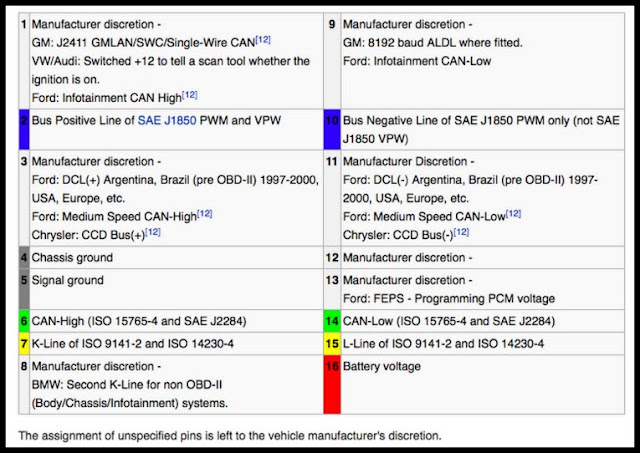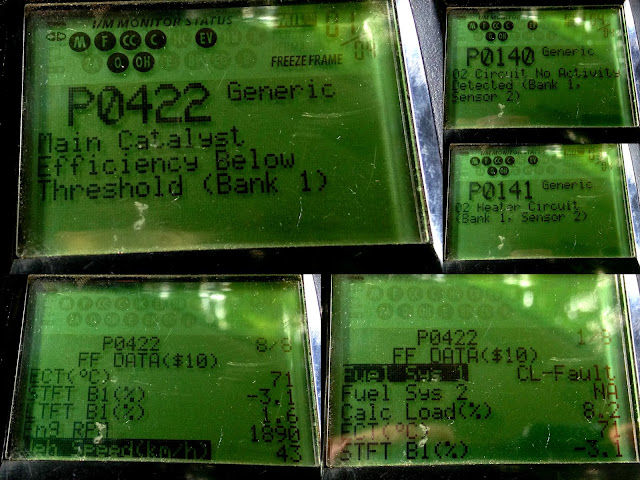OBDII port – On-board Diagnostics. The II is pronounced “two”.
Each of the 16 pins outputs something specific:
(photo via Wikipedia)
Found within 2 feet of all steering wheels, OBDII ports became mandatory in 1996.
That’s my ’99 VW Jetta.
When you read about car hacking and it says,
“requires physical access to the vehicle”,
that usually means through this port.
Connect an OBD II scanner to see what’s up.
It gives back readouts that look like this.
How to read the codes:
1st character – indicates which system is having the problem.
B = Body C = Chassis P = Powertrain U = Undefined
2nd digit – identifies if the code is generic, or specific to a manufacturer
0 = Generic
1 = Manufacturer specific
3rd digit – indicates which sub-system is having the problem
1 = Emission Management (Fuel or Air)
2 = Injector Circuit (Fuel or Air)
3 = Ignition or Misfire
4 = Emission Control
5 = Vehicle Speed & Idle Control
6 = Computer & Output Circuit
7 = Transmission
8 = Transmission
9 = SAE Reserved
0 = SAE Reserved
4th and 5th digits – variable, and indicate a particular problem
My Jetta output a _lot_ of codes.
Which is why it failed its E-test, so hard, and is no longer on the road.
Couple this OBDII port to the internet,
and a whole new vertical in the auto industry is starting.
Example: Mojio is a (Canadian!) company that is soon launching a cellular-&-GPS device that plugs into this port. It will provide real-time engine analytics, share your car’s location with your contacts, analyze your driving style, and much more, because apps can be written for the device.
I predict insurance companies will use these, “pay only for insurance when you’re actually driving on the road! Imagine the savings!”… like that.




